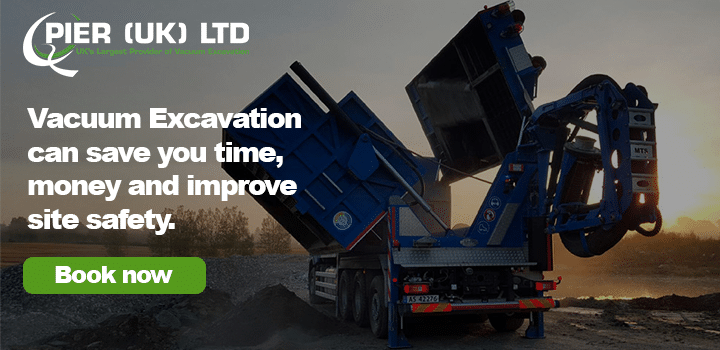Excavation is an important part of any construction project and is even more important for utility projects. The process uses different tools and techniques to move soil, rock and other material to form a cavity and prepare the area for construction, or to lay new utilities as well as repairing the existing ones, but what are the latest excavation techniques in construction?
When it comes to excavating a site, it can be a difficult decision in which method is the best for your company and choosing the wrong type can be a costly error in both monetary and safety terms.
What is Excavation in Construction?
Excavation work is carried out in many construction projects. Construction does not just take place on the top of the ground but involves work below the surface, whether this is clearing the site, working around utilities, or laying foundations, much of the initial work of construction is below ground level. In some ways, this work is some of the most important. If there are problems with foundations it will affect the whole building, so ensuring that the work done in preparation is of a high quality, is essential.
Work Procedure of Excavation
The work procedure on a construction site involves more than just moving earth. A thorough understanding of the process, procedure, and expected outcome are necessary to achieve a good result. It is essential to understand the centre line and excavation drawings, and setting out of the plan on the ground. The site must be cleared of weeds, bushes, and plants, after which the ground can be marked out so that the excavation is carried out in the desired location. Benchmarks are set so that correct levels can be maintained. Once everything is correctly marked up, then the excavation job can begin. After this is done, then the earth and material must be removed, and any necessary shoring up carried out, to ensure the cleared area is safe and stable.
Drawings Required for Excavation
Gridline drawings are required for the excavation operation on a building site. These detailed plans mark out the ground on a grid system and are invaluable for safely excavating below ground. One of the huge benefits of vacuum excavators over more traditional types of excavating is that if the site plans do not show the utilities in the correct place, then the risk is far less. With traditional excavating, the risk of cable strikes is high and can have catastrophic consequences. With vacuum excavating, your risk is massively reduced. It is a safer and more sensible option if you have any doubts about the accuracy of your site drawings.
Scope of Work for Excavation
Excavating does not simply involve the removal of earth or materials to create a cavity. It also comprises the correct study of the site, marking out the boundary lines precisely, and ensuring that the excavating is carried out within the markers and to the correct depth. After the material has been excavated, it must be removed, and the space created needs to be correctly shored up so that it is safe. Always ensure that you work with a professional company such as ourselves, so that your finished work is completed to a high standard and ready for the building work to proceed.
Excavation Techniques in Construction
Cut and Fill Excavation (or Stripping Excavation) is used to clear large areas in construction. This process involves removing layers of wide and shallow rocks, sand and topsoil, as well as other materials.
Trench Excavation is where the length of which the excavated areas exceed the depth and is typically used to access or bury services lines, as well as installing or repairing pipelines and sewers. Vacuum Excavation is perfectly suited to this type of work as it removes the risk of breaking power lines or utilities, typically associated with diggers and manual excavation which dramatically improves on-site safety.
Basement Excavation is all about the layer below ground level in an existing building. This type of excavation is used when the construction is set to be completed partially below ground level. It is worth noting that this excavation can be complicated depending on the size of the property in question.
Borrow Excavation is quite different to other types of excavation. The goal here is not to just excavate the material as it also needs to be removed from the area. The efficient form of equipment for replacing Borrow removal is a Vacuum Excavator, of which PIER (UK) have an ever-growing fleet.
Drainage Excavation is used for draining ditches, wastage around structure as well as storm drains, which are located at the shallower depths of combined sewers. With the drainage systems being notoriously small and difficult to reach, Vacuum Excavators, are ideal for this type of excavation.
As the industry leaders in Vacuum Excavation, PIER (UK) will listen carefully to their customers’ requirements and provide a solution that is suitable for the job at hand. You can contact our team through our contact form or alternatively call 01925 228 674. You can also view our latest projects on our social media platforms: Facebook, LinkedIn and Twitter.



